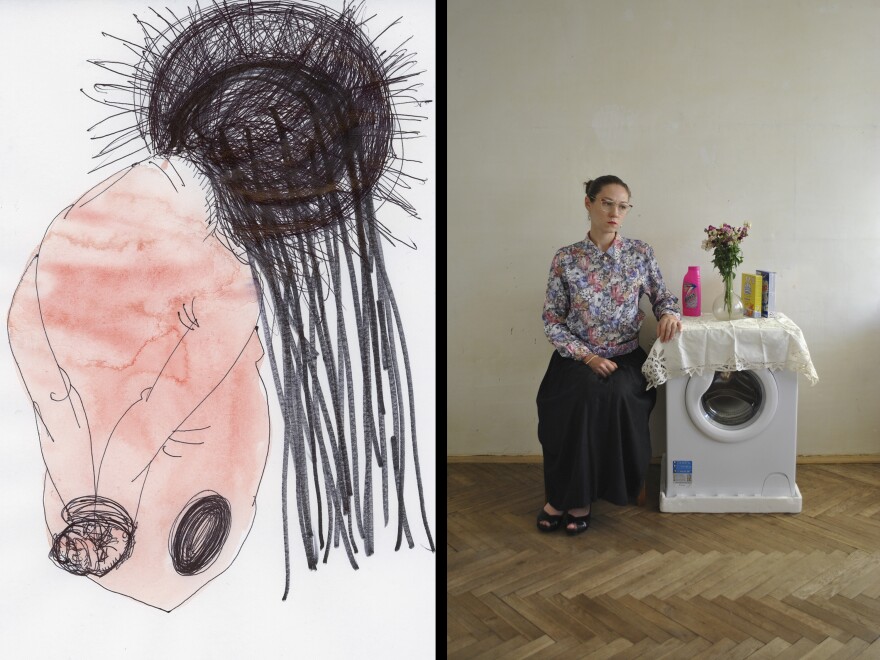Ukrainian conceptual artist Olia Fedorova (born 1994) lives and works in the Ukrainian city of Kharkiv. When Russian forces began day and night bombings of the city in February, Fedorova was forced to spend her days in a bomb shelter. Without art supplies, she made do with what was available to her. The result: “May You Choke on My Soil,” original poetry written in red ink on old, wrinkled bedsheets.

May you choke on my soil.
May you poison yourself with my air.
May you drown in my waters.
May you burn in my sunlight.
May you stay restless all day and all night long.
And may you be afraid every second.
The work is featured in a new traveling exhibition by New York City’s Fridman Gallery called “Women at War.” It’s on display at Eastern Connecticut State University.
Independent art curator and historian Monika Fabijanska curated the exhibit. She said getting Fedorova’s work from a bomb shelter in Kharkiv to the United States took some doing.
“It took three months to get this one poem, one piece of textile to New York City,” Fabijanska said. “But Olia was still in bombed Kharkiv, so every day we were checking on the status of the package as it was moving. It was a token of life, it was a reason for us to check on Olia and see how she’s doing.”

About a dozen artists were chosen for the exhibit, each one with their own take on what it’s like to live with the ravages of war. Many of the works were created since the Russian invasion of Ukraine in February. Others were reflections from 2014, when Russia invaded and annexed the Crimean peninsula. Fabijanska said the works share a common theme: In war there are no victories.
“They are interested in the fact that everyone is defeated, that everyone loses,” Fabijanska said. “And they particularly look at the parts of their own society which are left behind and disadvantaged. It’s not the subject of the battle that they are looking at, they are not looking at heroism, they are looking at the life of people during the war.”

The exhibit also focuses on an Eastern European brand of feminism, which Fabijanska explained differs from the rest of the western world.
“The Bolsheviks saw women as potential workforce, so they were given rights early on, only to have them taken away after Stalin,” Fabijanska said. “And after the fall of communism, women went back to more traditional roles. They embraced femininity, they wanted to stay home, they didn’t want to work in the factory. So it produced a very weird cocktail of traditional thinking of a women’s role, but it took about 20 years for women to say ‘there’s something wrong.’ They realized they needed their rights back.”
“Women at War” runs through Oct. 15 in the Art Gallery at Eastern Connecticut State University in Willimantic.



